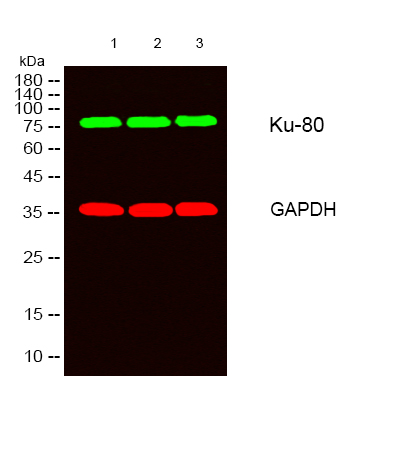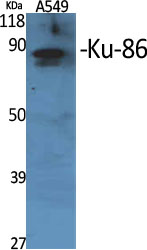Shc3 (Phospho Tyr424) rabbit pAb
- Catalog No.:YP1771
- Applications:WB
- Reactivity:Human;Mouse;Rat
- Target:
- Shc3
- Fields:
- >>EGFR tyrosine kinase inhibitor resistance;>>Endocrine resistance;>>ErbB signaling pathway;>>Ras signaling pathway;>>Chemokine signaling pathway;>>Phospholipase D signaling pathway;>>Focal adhesion;>>Natural killer cell mediated cytotoxicity;>>Neurotrophin signaling pathway;>>Insulin signaling pathway;>>Estrogen signaling pathway;>>Prolactin signaling pathway;>>Relaxin signaling pathway;>>Growth hormone synthesis, secretion and action;>>Alcoholism;>>Bacterial invasion of epithelial cells;>>Glioma;>>Chronic myeloid leukemia;>>Breast cancer;>>Hepatocellular carcinoma;>>Gastric cancer
- Gene Name:
- SHC3 NSHC SHCC
- Protein Name:
- Shc3 (Phospho-Tyr424)
- Human Gene Id:
- 53358
- Human Swiss Prot No:
- Q92529
- Mouse Gene Id:
- 20418
- Mouse Swiss Prot No:
- Q61120
- Rat Swiss Prot No:
- O70143
- Immunogen:
- Synthesized peptide derived from human Shc3 (Phospho-Tyr424)
- Specificity:
- This antibody detects endogenous levels of Shc3 (Phospho-Tyr424) at Human, Mouse,Rat
- Formulation:
- Liquid in PBS containing 50% glycerol, 0.5% BSA and 0.02% sodium azide.
- Source:
- Polyclonal, Rabbit,IgG
- Dilution:
- WB 1:500-2000
- Purification:
- The antibody was affinity-purified from rabbit serum by affinity-chromatography using specific immunogen.
- Concentration:
- 1 mg/ml
- Storage Stability:
- -15°C to -25°C/1 year(Do not lower than -25°C)
- Other Name:
- SHC-transforming protein 3 (Neuronal Shc) (N-Shc) (Protein Rai) (SHC-transforming protein C) (Src homology 2 domain-containing-transforming protein C3) (SH2 domain protein C3)
- Molecular Weight(Da):
- 65kD
- Function:
- function:Signaling adapter that couples activated growth factor receptors to signaling pathway in neurons. Involved in the signal transduction pathways of neurotrophin-activated Trk receptors in cortical neurons.,PTM:Tyrosine phosphorylated.,similarity:Contains 1 PID domain.,similarity:Contains 1 SH2 domain.,subunit:Interacts with the Trk receptors in a phosphotyrosine-dependent manner. Once activated, binds to GRB2. Interacts with activated EGF receptors.,tissue specificity:Mainly expressed in brain. Hardly detectable in other tissues, except in pancreas. Highly expressed in the cerebral cortex, frontal and temporal lobes, occipital pole, hippocampus, caudate nucleus and amygdala. Expressed at low level in the cerebellum, medulla and spinal cord.,
- Subcellular Location:
- cytosol,plasma membrane,
- Expression:
- Mainly expressed in brain. Hardly detectable in other tissues, except in pancreas. Highly expressed in the cerebral cortex, frontal and temporal lobes, occipital pole, hippocampus, caudate nucleus and amygdala. Expressed at low level in the cerebellum, medulla and spinal cord.
- June 19-2018
- WESTERN IMMUNOBLOTTING PROTOCOL
- June 19-2018
- IMMUNOHISTOCHEMISTRY-PARAFFIN PROTOCOL
- June 19-2018
- IMMUNOFLUORESCENCE PROTOCOL
- September 08-2020
- FLOW-CYTOMEYRT-PROTOCOL
- May 20-2022
- Cell-Based ELISA│解您多样本WB检测之困扰
- July 13-2018
- CELL-BASED-ELISA-PROTOCOL-FOR-ACETYL-PROTEIN
- July 13-2018
- CELL-BASED-ELISA-PROTOCOL-FOR-PHOSPHO-PROTEIN
- July 13-2018
- Antibody-FAQs
- Products Images

- Western Blot analysis of various,using primary antibody at 1:1000 dilution. Secondary antibody(catalog#:RS23920) was diluted at 1:10000

